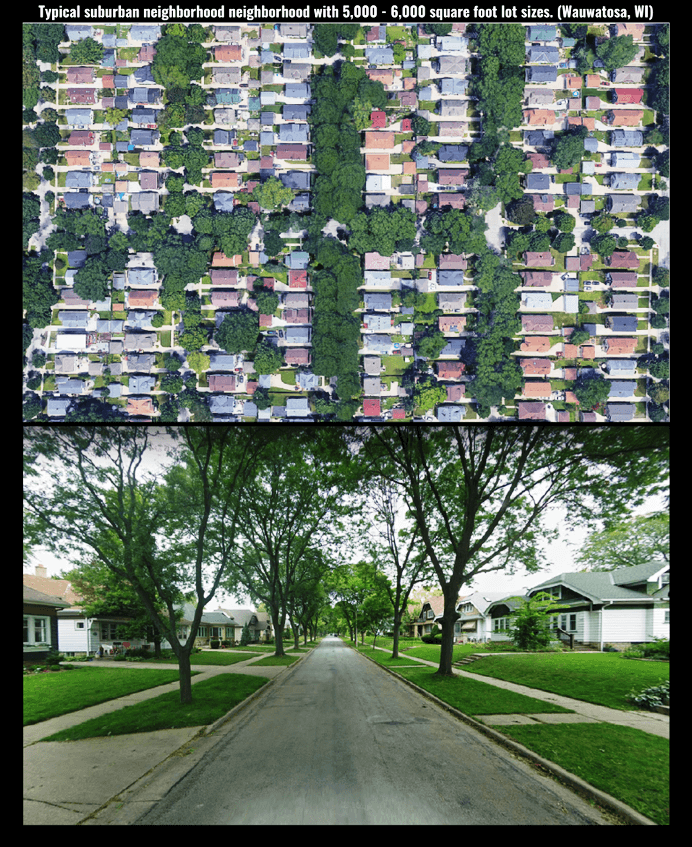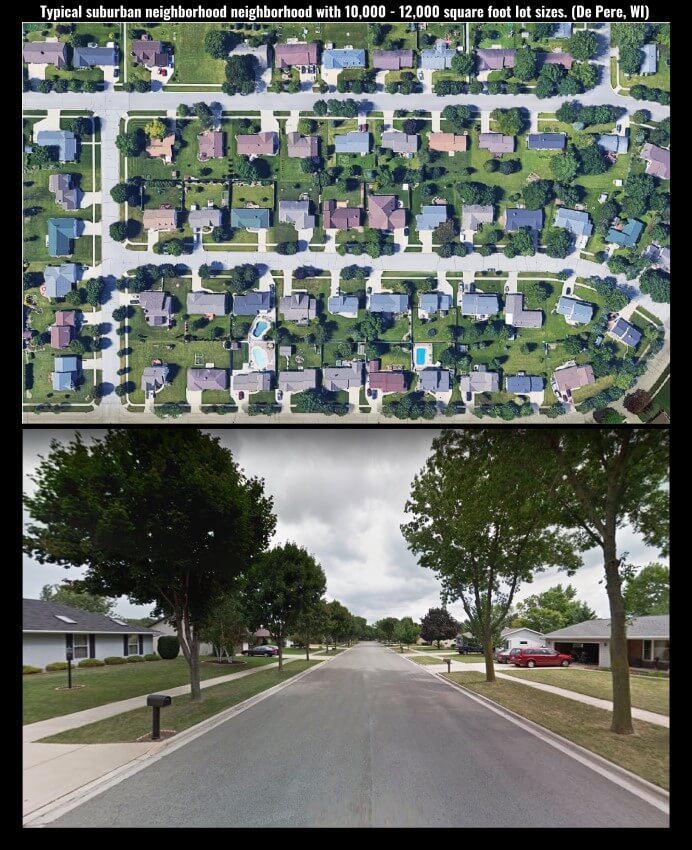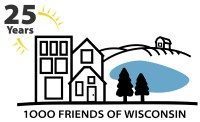As Wisconsin has become more auto-dependent, local ordinances have responded to accommodate vehicles. Working under the surface, our regulations have helped mandate a land use pattern that is conducive to vehicles at the expense of all other forms of travel.
Often overlooked, zoning codes and municipal ordinances like mandatory parking, minimum lot sizes, and street widths have shaped and now define the places we live.
This article will explore minimum lot sizes, which have an outsized impact on our land use patterns.
Minimum Lot Sizes
Across Wisconsin, local governments heavily regulate residential land use. This includes setback, height, and open space requirements. However, very few regulations have as large an impact as minimum lot sizes.
Minimum lot sizes determine how small a developer can subdivide plots of land. These minimums push single-family homes further apart and increase the purchasing cost by requiring more land per home. Almost 75% of residential land in America is zoned for single family homes, which makes minimum lot requirements responsible for much of the prime farmland destroyed over the last seven decades.

In the early post-war suburbs, 5,000-6,000 square foot lots were considered the standard. Over the years, this has grown to 7,000-10,000 square foot in many Wisconsin communities. For instance, the City of De Pere’s single family home zoning district requires 10,000 square feet for a lot, 12,000 if it’s a corner lot.
These regulations mean that fewer homes can fit in a given area and they encourage automobile travel by further separating residential homes from employment, retail, and other basic goods. If communities in Wisconsin review their minimum lot sizes it would allow for greater flexibility to accommodate more housing types.

1000 Friends encourages Wisconsin communities to reconsider their local regulations that may be inadvertently supporting suburban sprawl and auto-oriented neighborhoods.
Large minimum lot sizes, like those in De Pere, can be found in many communities across Wisconsin.
We support changes to local ordinances that support mixed-use development with compact, pedestrian-focused lot sizes. This can be challenging, if not impossible to achieve, with outdated regulations.
Check out the fourth article on preferred street widths.
This is the third post in a series highlighting the relationship between land use and transportation – the Transportation Connection – below is a full list of articles in the series.
Part 1: The Connection between Transportation and Land Use
Part 2: Mandatory Parking Minimums
Part 3: Minimum Lot Sizes
Part 4: Local Ordinances (Street Widths)
Part 5: Highways as Land Use
Part 6: Fighting Highways to Preserve Neighborhoods
